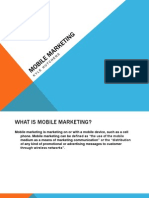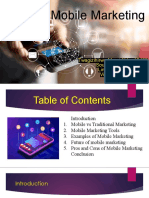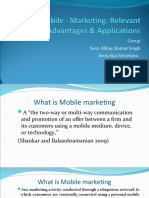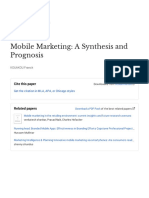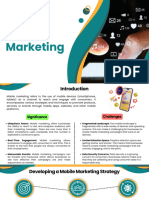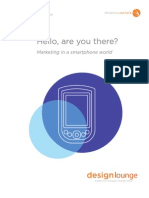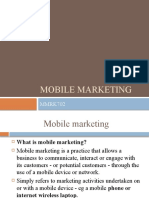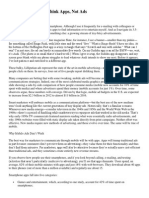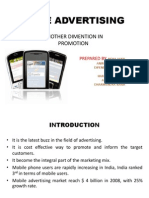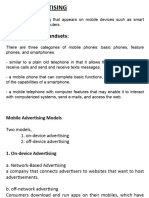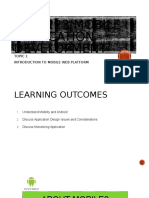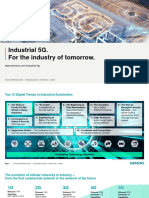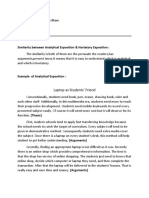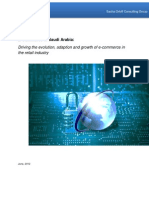0% found this document useful (0 votes)
48 views45 pagesWeek 7
The document outlines a presentation on mobile marketing and omni-channel strategies, covering topics such as the evolution of mobile marketing, its advantages, and objectives. It emphasizes the importance of targeting consumers through mobile devices and discusses various tactics like location-based targeting and app engagement strategies. Additionally, it highlights the significance of integrating online and offline experiences for a seamless customer journey.
Uploaded by
陳影彤Copyright
© © All Rights Reserved
We take content rights seriously. If you suspect this is your content, claim it here.
Available Formats
Download as PDF, TXT or read online on Scribd
0% found this document useful (0 votes)
48 views45 pagesWeek 7
The document outlines a presentation on mobile marketing and omni-channel strategies, covering topics such as the evolution of mobile marketing, its advantages, and objectives. It emphasizes the importance of targeting consumers through mobile devices and discusses various tactics like location-based targeting and app engagement strategies. Additionally, it highlights the significance of integrating online and offline experiences for a seamless customer journey.
Uploaded by
陳影彤Copyright
© © All Rights Reserved
We take content rights seriously. If you suspect this is your content, claim it here.
Available Formats
Download as PDF, TXT or read online on Scribd
/ 45
